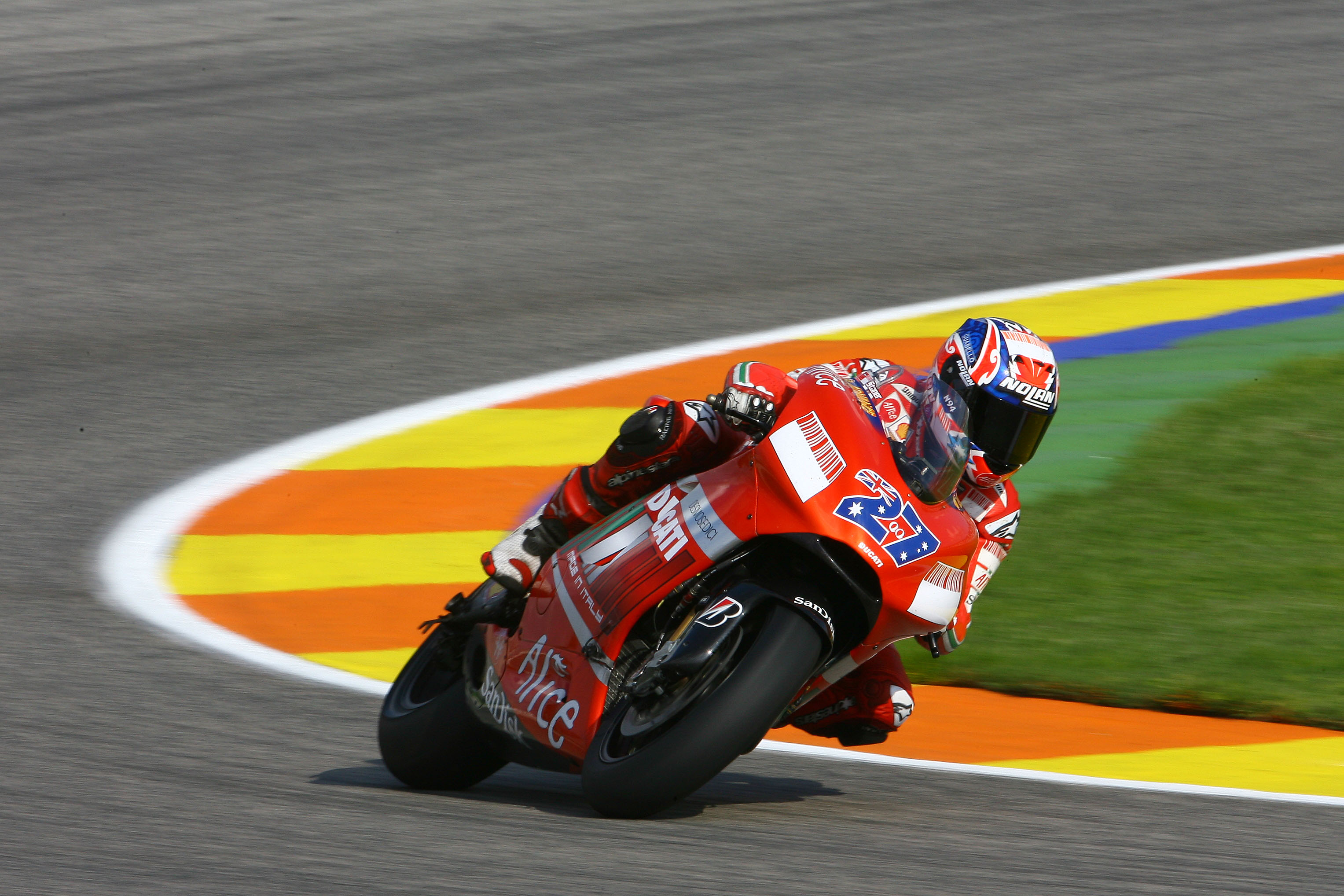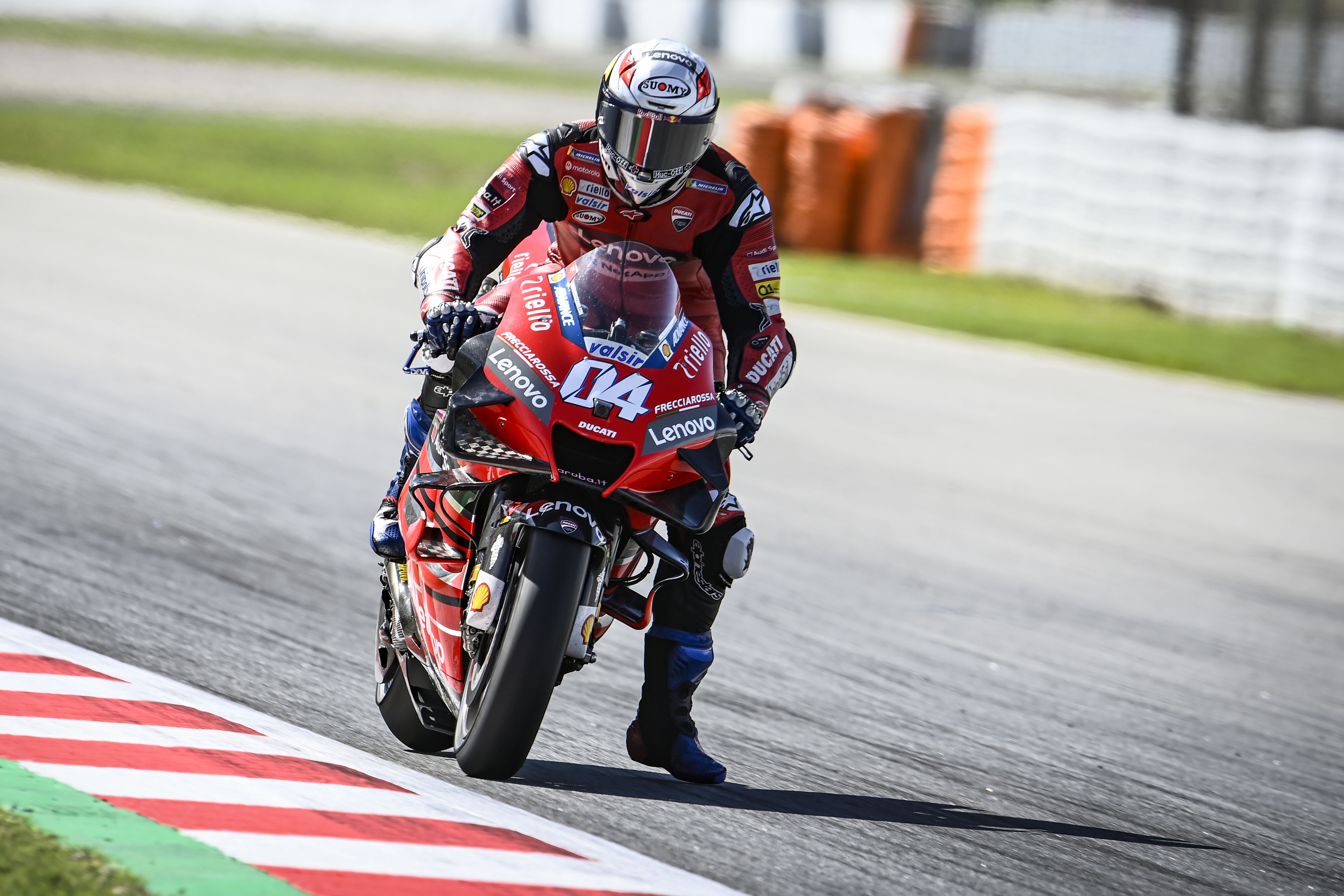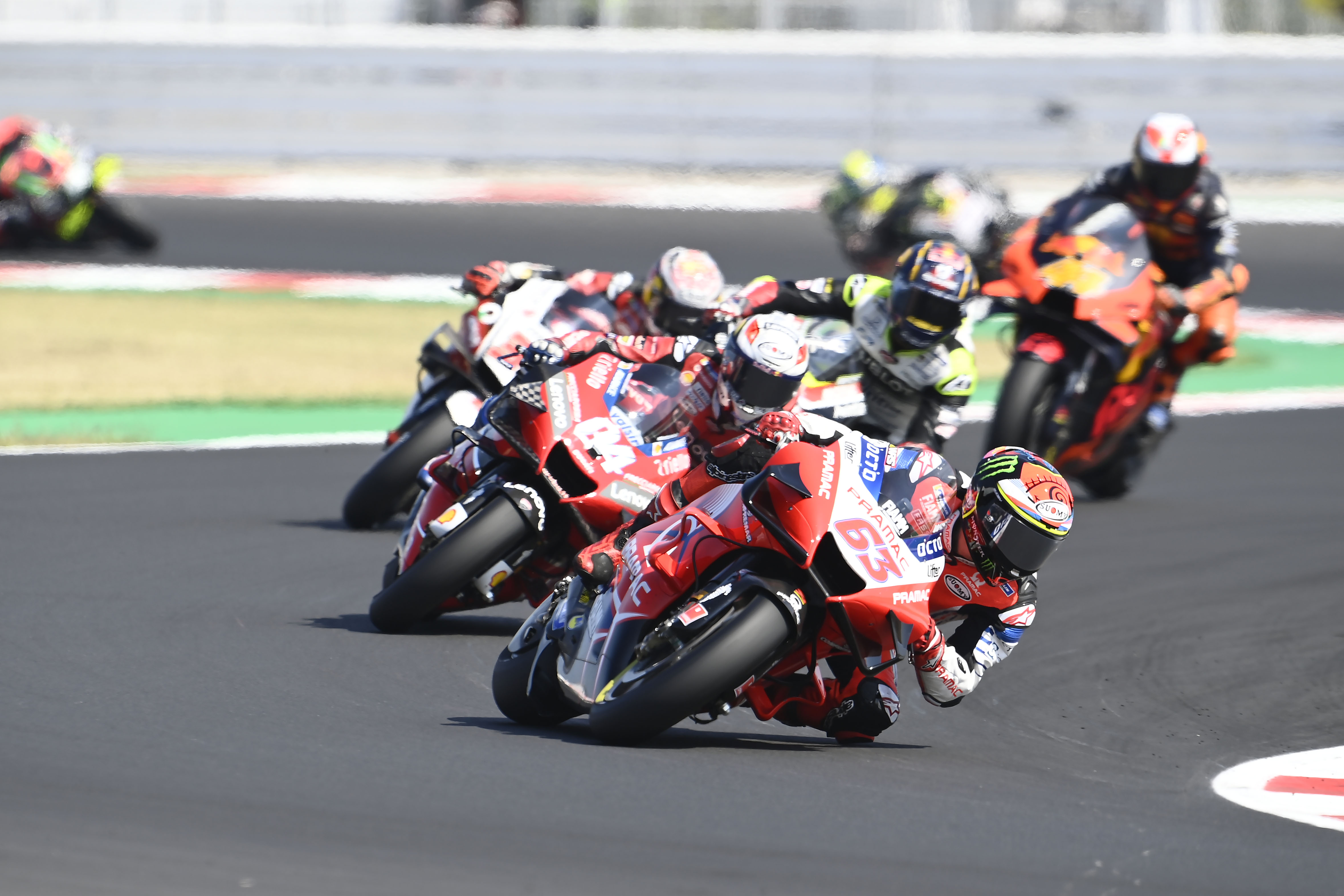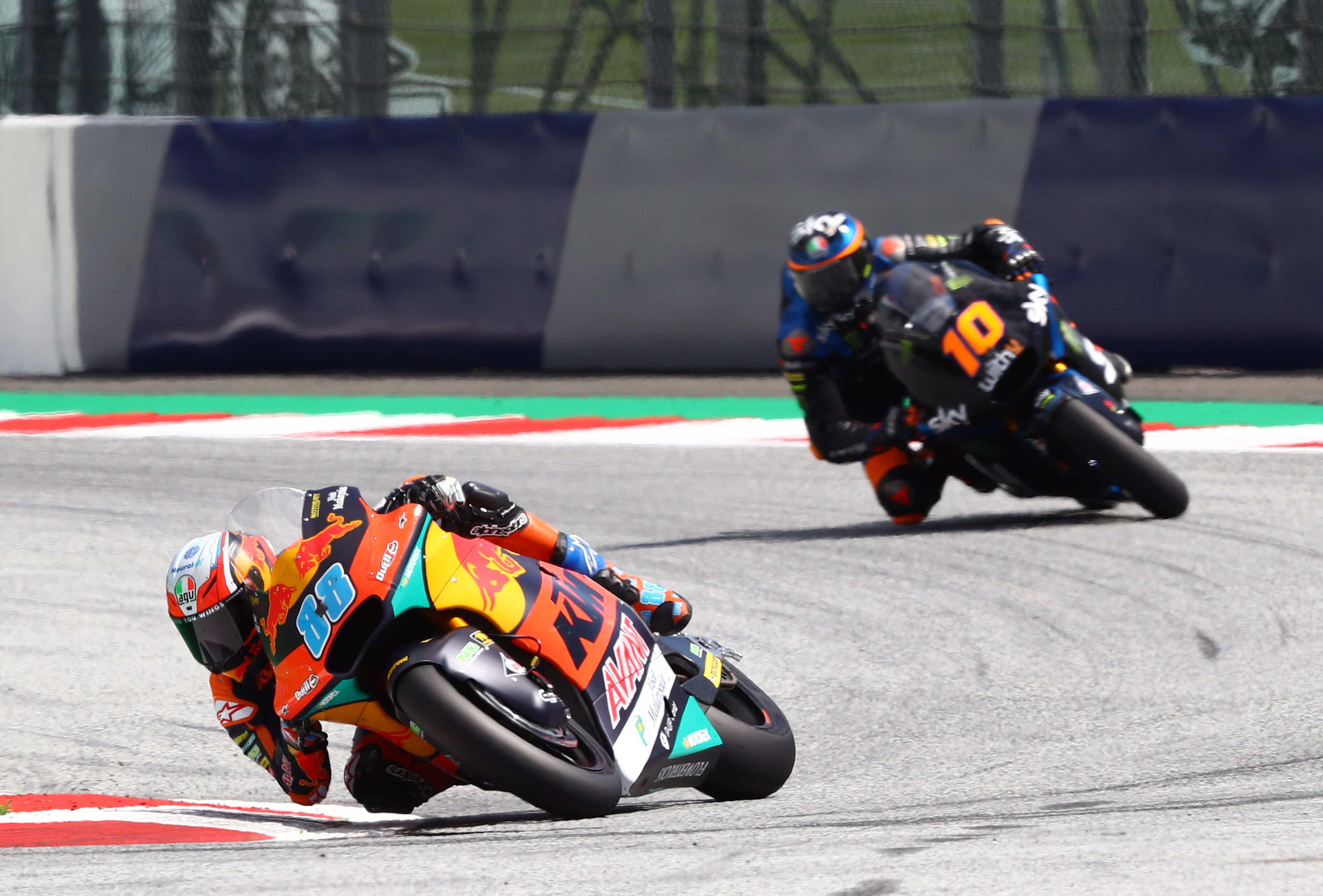For almost as long as it’s been in MotoGP, Ducati’s rider management strategy has been fairly obvious: allow other teams and manufacturers to do all the hard work, then poach their top talent when they reach maturity.
It’s in part due to Ducati’s position as one of the only teams in the paddock to have no real feeder system. Honda has its Moto3 projects, Yamaha increasingly relies on the VR46 Academy, Aprilia has a link with the Gresini squad, and KTM has an abundance of riches – but Ducati has never built that bridge.
Even with its most successful rider ever, the 2007 world champion Casey Stoner, the firm lucked into signing him, with the MotoGP rookie – making his debut with LCR Honda – believed to have been the sixth choice on its list when he was given the ride.

Young talent can be recruited directly into a factory team with no junior ranks – all you have to do is look at Suzuki’s impressive efforts with Joan Mir and Alex Rins to realise that. But even with a strong satellite squad in the shape of Pramac Racing, Ducati has instead tended to go after the big names.
Most famously, Ducati secured the services of Jorge Lorenzo on one of MotoGP’s biggest-paying contracts ever, only to get frustrated when he wasn’t able to deliver results and cut him loose just as he started to win.
Though Lorenzo was replaced with a relatively homegrown option in Danilo Petrucci, Ducati reverted to its previous recruitment strategy at the start of this season, by initiating talks with Rins, with Fabio Quartararo, and with Maverick Vinales, only to be rejected by all of them and forced to reconsider its options.
Ducati even attempted to backtrack on 2018’s reckless decision to chop Jorge Lorenzo by reaching out to him when it became apparent that the relationship with three-time championship runner-up Andrea Dovizioso had broken down irreconcilably and the factory needed a lead rider for 2021 and beyond.
The breakdown in relationship with Dovizioso (and with Lorenzo and Stoner before him) is exactly why the factory can’t recruit top talent any more, either. Under the direction of Ducati CEO Claudio Domenicalli and technical guru Gigi Dall’Igna, the Bologna manufacturer has developed a reputation as a tough place to work at, with riders being firmly told to make themselves fit around the Desmosedici instead of having the bike be adapted to them.
That’s what spelt the end of Dovi’s time there, with the death knell coming on his seven-year relationship with the team when Michelin introduced a new rear tyre for 2020 that radically altered the characteristics of how the Desmosedici bike brakes and enters corners.

While the impact has been mitigated for certain other Ducati riders through changes in riding style, Dovi wasn’t able or willing to make the same adaption and as a consequence has struggled to perform this year.
And his loss has been the gain of others, because while Ducati might have started the year chasing top names, it has actually lucked into having a 2021 line-up that in fact is much better suited to riding its bike by lieu of not knowing anything else.
Jack Miller has been fast for a number of years on the Pramac bike, and he finally looks to be making all-too-frequent crashes a thing of the past. A textbook example of the old paddock adage of how it’s easier to make a fast rider stop crashing than it is to make a slow rider faster, the Australian is maturing into a title contender at long last.
And on the other side of the red garage for 2021, as the entire 2020 Pramac line-up gets promoted, Pecco Bagnaia has demonstrated to perfection how a Ducati rider through and through can get the best out of the bike even with Michelin’s new tyres.
Utilising a completely different riding style to Dovizioso’s – one where he spends most of his time hanging well off the side of the bike to maximise turning – Bagnaia doesn’t complain about the age-old Ducati issue of mid-corner speed.

Looking beyond Bagnaia and Miller in the factory team, Ducati has also secured the services of some of the hottest talents in grand prix racing to ensure that there’s the benefit of age in its depth of field.
Stealing Jorge Martin away from KTM’s feeder programme is a real coup, with the former Moto3 world champion singled out by many in the paddock (including by Lorenzo) as a genuine hopeful for next big thing status. Dominant in Moto3 and quickly winning in Moto2 once he ditched KTM’s bike for a Kalex, Martin will be a factory rider before too much longer.
Enea Bastianini – whose confirmation at Avintia is a simple matter of time – is likewise an interesting prospect, and there’s the possibility also of fitting in Luca Marini, who has been thoroughly impressive in Moto2 this year. Both will be rookies if they step up next season, which gives Ducati the chance to tailor its new signings for the bike in the longer-term.
With a radical shake-up of the grid destined to happen in 2022 as team contracts expire and satellites go looking for new manufacturers, it also gives Ducati the added benefit of having more young talented riders than it’ll probably have bikes – a golden opportunity to pick the best and brightest to keep.

And, impressively, Ducati has managed to do all this while still retaining the services of a test rider-cum-racer in the shape of Johann Zarco on the second Pramac bike. An older head than his 2021 teammates by a good five years but with experience of every bike in MotoGP bar Aprilia, he’s the perfect person to take over from Miller as a filter for new parts before they reach the red bikes.
It’s almost been by chance rather than design, but the end goal of all these parts is that Ducati has somehow built itself a stronger structure than ever before – and now all it needs to do is not mess it up with bad management and wait for the wins to roll in.




